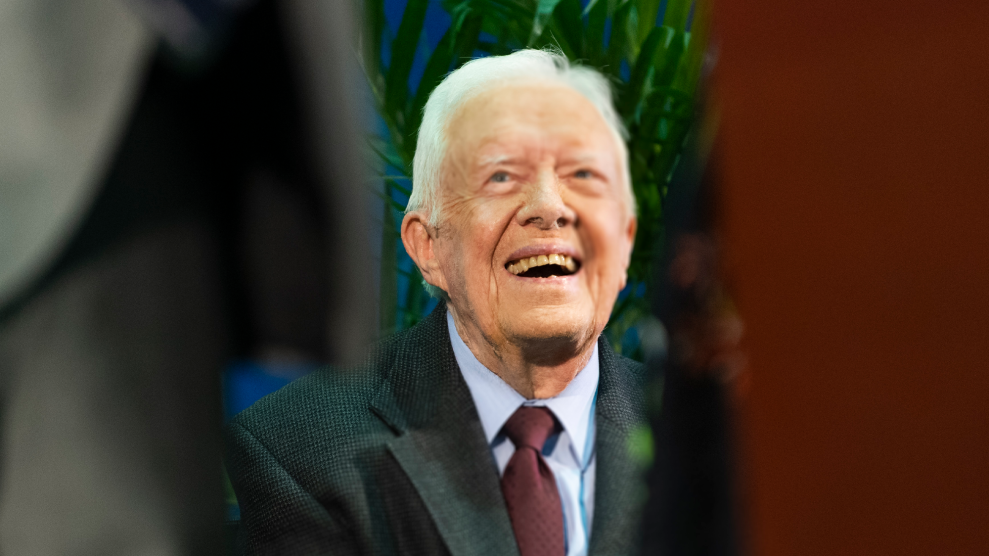
A disabled voter receiving assistance in voting at an accessible voting machine from an election volunteer. Michael Ho Wai Lee/SOPA/Zuma
Disabled and chronically ill voters: What was your experience casting a ballot in person, either this week or in early voting?
Civil and voting rights protections like the Voting Rights Act and the Americans With Disabilities Act are supposed to protect disabled people’s right to vote in person, which means having the right accommodations: wheelchair-accessible entrances; lower voting booths; and chairs for people who have trouble standing for long periods. But polling stations often fall short, in both Democratic- and Republican-leaning areas.
Disabled and chronically ill voters: What was your experience casting a ballot in person, either this week or in early voting?@metraux_julia on voting access 👇 pic.twitter.com/D1Pck8tSmv
— Mother Jones (@MotherJones) November 9, 2024
Disabled people don’t all have the same preferences—or needs—when it comes to voting. Some people with fatiguing conditions like Long Covid may prefer mail voting to conserve energy and minimize Covid exposure; some Blind people may prefer to vote in person in order to cast an unassisted ballot with an accessible voting machine.
As I wrote for Mother Jones in April:
Counties are responsible for choosing the locations where their residents vote. The right response to inaccessible voting locations is not to have fewer of them—polling place closures disproportionately impact voters of color—but to find more locations that are accessible. The Department of Justice also provides guidance on temporary solutions to make sure disabled people can vote, such as installing a ramp and keeping doors propped open…As of now, no state mandates that poll workers be trained in accommodating disabled voters.
What may be accessible to some disabled people may not be for others. That’s why it’s crucial to move towards more accessible options both in-person and by mail—mail-in voting with paper ballots isn’t accessible, for example, to people who are Blind and have low vision, the subject of a lawsuit filed in Wisconsin…arguing that disabled voters should be able to vote electronically.
If accessible voting—and disabled voters—were taken more seriously in America, more disabled people would take part in the electoral process. It’s that simple.
















